Registration Opens
01 May 2024
Judging
Date
26 & 27 March 2025
Winners Announcement
22 April 2025
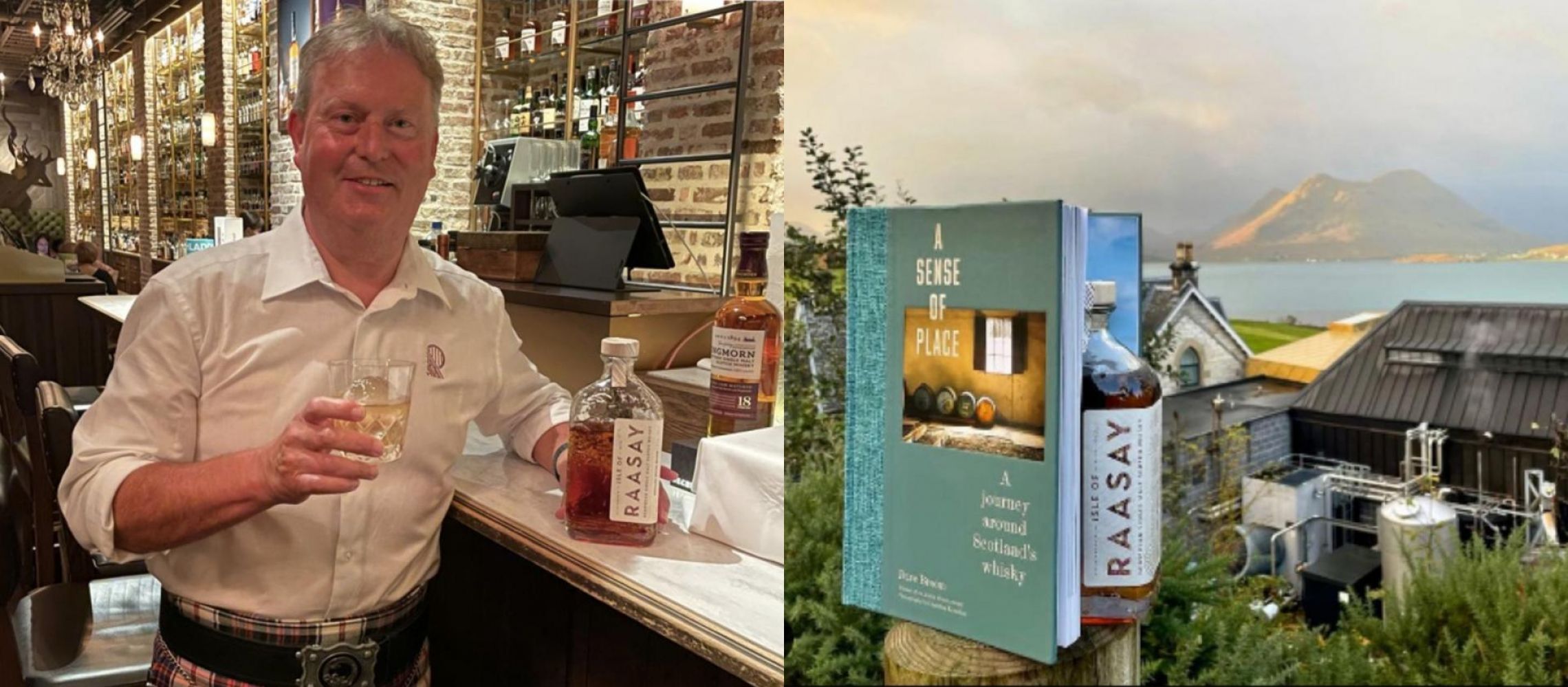
I have an Honours Degree in Botany from Glasgow University. My very first job was growing mushrooms. I know all the jokes; it was magic, I am a Fun Guy, and there is not Much Room in here, always kept in the dark and fed Bulls***. Anyway, then I moved into fresh produce based in the UK and travelled the world looking for the best fruit and vegetables to import and pack for the UK supermarkets. Then the Dairy Industry, latterly in Cheese (some friends still call me the Cheese Man). By that time I was thinking of starting my own business, I thought about the food industry but my Dad suggested recreating my Great Grandfather's blended Scotch Whisky - The Tweeddale. So in 2009 established a new business and in May 2010 I launched my first batch of The Tweeddale onto the market. By 2012 I had decided to try to establish a new small distillery to make my own single malt. Through this process, I met Bill Dobbie in November 2013 and in July 2014 we cofounded R&B Distillers Limited in order to create the Isle of Raasay Distillery. We broke ground on Raasay in June 2016 and started distilling in September 2017. We released our first Isle of Raasay Hebridean single malt scotch whisky in November 2020.
My current role as Cofounder & Master Distiller involves overseeing our spirit production, wood policy, maturation and bottling on Raasay. I am also currently working on the process design for our proposed 2nd distillery in Machrihanish, Campbeltown.
My Great Grandfather was a whisky blender in Coldstream, on the River Tweed in the Scottish Borders. I can trace my family connection to whisky back to 1820 when the original business J&A Davidson was established in Coldstream. In 2009 I inherited my Great Grandfather's cellar book with all of the recipes for the J&A Davidson blended scotch whiskies blended from 1899 to 1916. It was this book and these recipes that inspired me to start my own whisky business.
Knowing how to create the style of styles of new make spirit you want to produce and the process that will allow you to produce them. How to create all of the flavours you require during fermentation and which of these flavours will distil across. Creating a wood policy/cask selection that works with your new make spirit that will enhance it creating depth, complexity and balance through maturation.
Absolutely, marketing is about telling a story and asking why we do what we do. A distiller can help answer the why and help create that story.
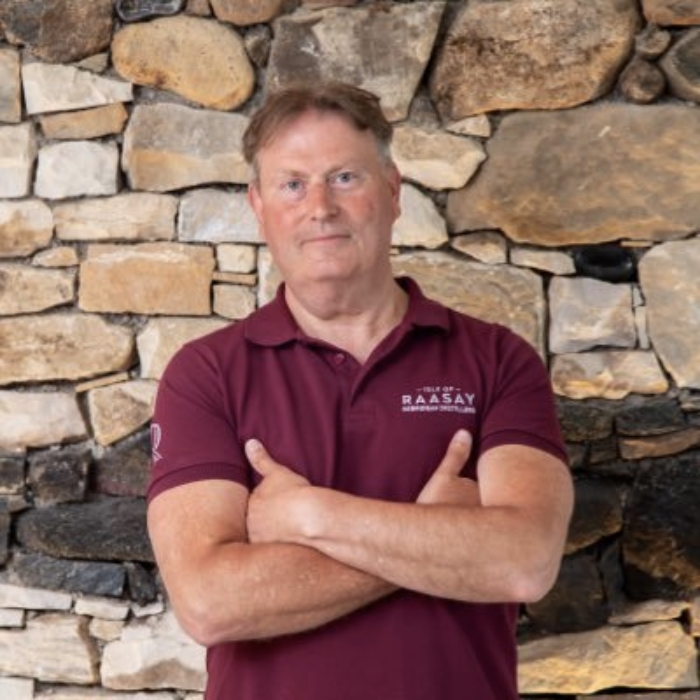
Image: Alasdair Day
See my answer to the most important skills for a distiller.
See my answer to the most important skills for a distiller.
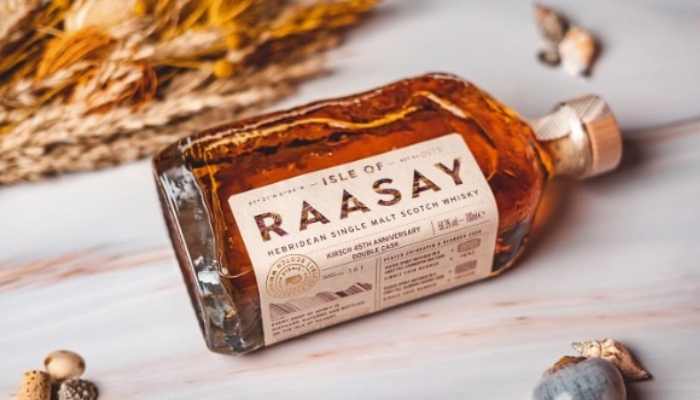
Isle of Raasay Hebridean single malt; lightly peated with dark fruits with a depth of flavour beyond its years.
There are a lot of economic and political heads winds creating challenging conditions for spirits. All of these need to be understood and negotiated in each individual market. There is a lot of ongoing hard work and market visits required to continually promote our brand in each market and support our partners in each market.
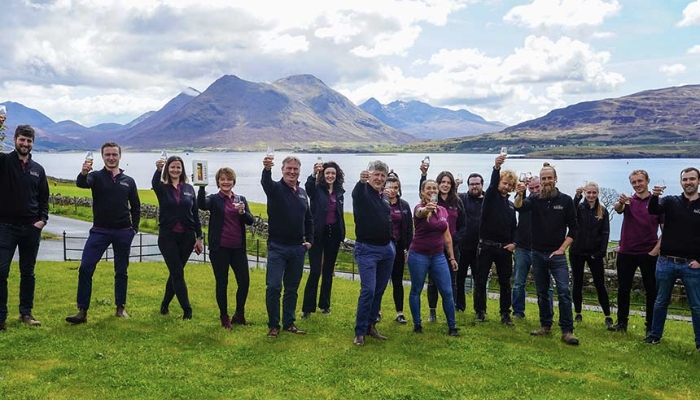
Image: Distillery team
The ongoing developments in sustainable technology and how these can be integrated into distillery process design and we want to ensure we adopt all of those that are available to us in the design of our Machrihanish Distillery project and if possible on Raasay too.
Enjoying work and being able to talk passionately about what we do while having the opportunity to visit different distilleries in different parts of the world to learn more about what they do.
A whisky and ginger ale, somewhere comfortable with good company and a great view (or an open fire if it's dark).
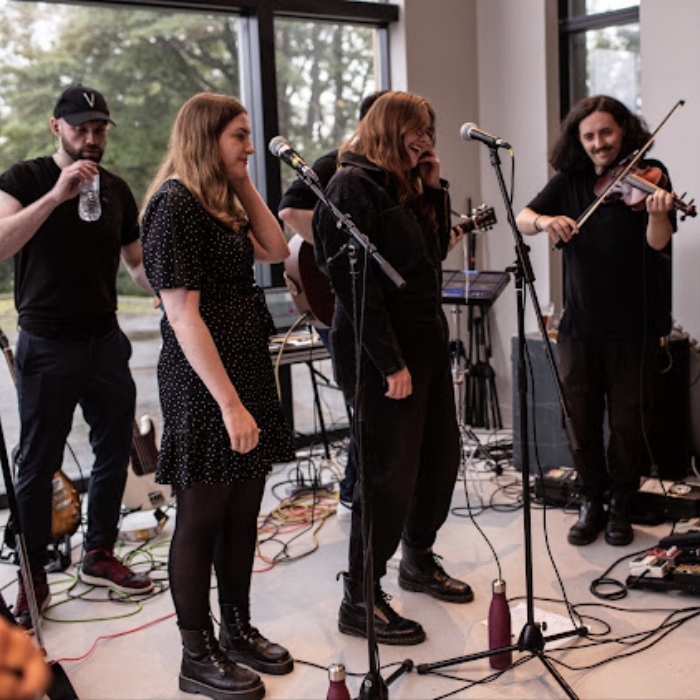
A Sense of Place by Dave Broom and the Malt Whisky Year Book by Ingvar Ronde.
We talk a lot about our six-cask recipe or the Nia Sia (in Gaelic). We produce peated and unpeated new make spirit matured separately in three different cask types (ex rye casks, chinkapin oak casks and ex Bordeaux red wine casks). Once matured in our warehouses on Raasay we vat these six different cask types together to create our Isle of Raasay Hebridean Single Malt. The base is the ex-rye casks, then the chinkapin oak casks and then the ex-Bordeaux red wine casks.
Our draft is collected by the crofters on Raasay and fed to their cattle and sheep. We use our pot ale and spent lees to preheat our wash going into our wash still. This reduces the amount of steam required and the amount of energy we use.
[[relatedPurchasesItems-63]]
We ferment for 3 to 5 days (6 x five days and 4 x 3-day fermentations per week). These longer fermentations create the dark fruit flavours we are looking for. We also get lactobacillus development after three days which produces lactic acid that lowers the pH (giving better catalytic interaction with the copper in the stills) and the lactic acid reacts with the esters produced during fermentation to produce more complex esters (flavour). We also have cooling jackets on our washbacks so we can control the maximum fermentation temperature around 32*C for unpeated and over 35*C for peated. The higher fermentation temperatures allow the creation of more fusil oils creating a more viscous new make spirit and giving more mouthfeel.
We are working with Strathclyde University and Innovate UK on a Knowledge Transfer Project to decarbonise our distillery. This is looking at everything from creating hydrogen as a potential fuel source from our by-products to removing the use of fossil fuels from our process.
Last year we supplied 27 different markets and we hope to supply 40 markets by the end of this year. We try to identify and work with like-minded importers /distributors in each market that understand and are passionate about our brand.
Brown spirits continue to grow in most markets with rum becoming increasingly more popular. Whisky continues to grow well but there will be more challenges for Scotch Whisky given the popularity of Japanese Whisky, the rise of Irish Whiskey and an increasing interest in all other whisky being produced around the world. There is no doubt that our home market will remain the most difficult. We are seeing a decline in white spirits in particular smaller gin brands.